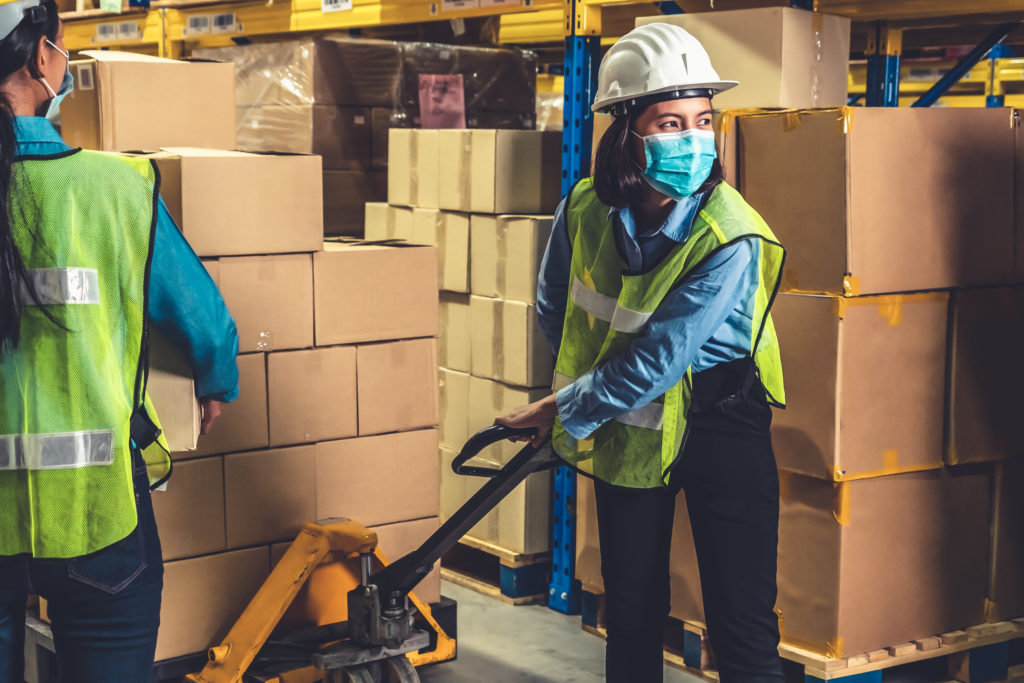
Recently, a group of supply chain partners, retailers, and manufacturers came together to create a task force that would outline standards needed in order to reduce person-to-person contact when freight is moved from Class 8 vehicles to last-mile drop-offs.
The Contactless Delivery Task Force, launched by the Consumer Brands Association, has developed protocols for safer and smoother delivery processes for everyone involved.
“Everyone is very concerned about ‘How do we keep our employees safe, how do we keep things moving efficiently in a high-demand environment?’” said Consumer Brands Association vice president of supply chains, Tom Madrecki. “But, that issue of safety continues to percolate and continues to be very relevant.”
The group’s primary focus will be electronic bills of lading (eBOL), which bring the benefits of digitizing typically paper-based processes for further efficiency and data accuracy, as well as health and safety improvements (by reducing the need for human contact).
“As shippers continue to build more efficient and resilient supply chains, the eBOL fills in a gap that many clients have been asking for,” said Accenture’s supply chain and operations practice senior manager, Henry Blum. “The touchless BOL will result in entry error reduction, increased visibility to OS&Ds, drive lower transportation costs, and benefit their green footprint.”
EBOLs will help the industry move away from paper documentation and forward into the age of online dashboards, virtual booking, instant quotes, and data analytics. These methods are becoming much more present throughout the industry as shippers more regularly prefer real-time updates and information. Trucking industry carriers have been adopting the technology more rapidly than ever.
Additionally, as more industry workers have been working from home due to COVID-19, the demand for quickly-available electronic information has skyrocketed, and the transition to eBOL has allowed shippers to give faster and more efficient insight into the operations and logistics of their warehouses from their remote locations. For jobs that cannot be done from home, an eBOL allows for easier social distancing as files and documents no longer need to be exchanged in person.
“As CPG companies identify ways to increase supply chain efficiencies and ensure employee safety, electronic delivery verification through a contactless pick-up and delivery process is a natural solution,” said Madrecki.
The task force plans to make contactless delivery and pickup protocol much easier while maintaining and increasing system efficiency and employee safety. Since its launch, the task force has grown to include 25 consumer packaged goods retailers and companies.
“We’re really looking at ‘How do we reduce human interaction so that we can continue to facilitate the movement of goods and services?’” Madrecki explained. “A lot of companies raised the need for contactless deliveries mechanisms or tools.”
One company on the task force is Land O’Lakes, Inc., which hopes to be part of a major change for the progress of supply chains.
“While a major disruptor, COVID-19 now gives us the opportunity to partner across our industry and develop the processes and procedures that will define the consumer packaged goods space for years to come,” said Land O’Lakes senior vice president and chief supply chain officer, Yone Dewberry. “Health, safety, and efficiency have always been our priorities, but now we’re forced to look for new and innovative ways of incorporating technology even further.”
Virtualization is key for the task force, and those that are part of the effort have found a solution to keeping supply chains moving efficiently has been electronic delivery verification. Because of this, eBOL processes are a logical next step.
“We specifically looked at that as the first bite of the apple when it comes to contactless deliveries and how do we remove paperwork and the physical process from deliveries,” said Madrecki. “But, there are clearly other applications.”
If a company is able to implement an eBOL system, it would also be able to put in place other related solutions for different situations, as many aspects of a trucking business involve electronic information transfers.
“If we can work in a concerted way to provide a workable standard for that, then there are clearly other applications to other parts of the delivery ecosystem,” said Madrecki. “It can definitely open up into a lot of different directions.”
Reader Interactions